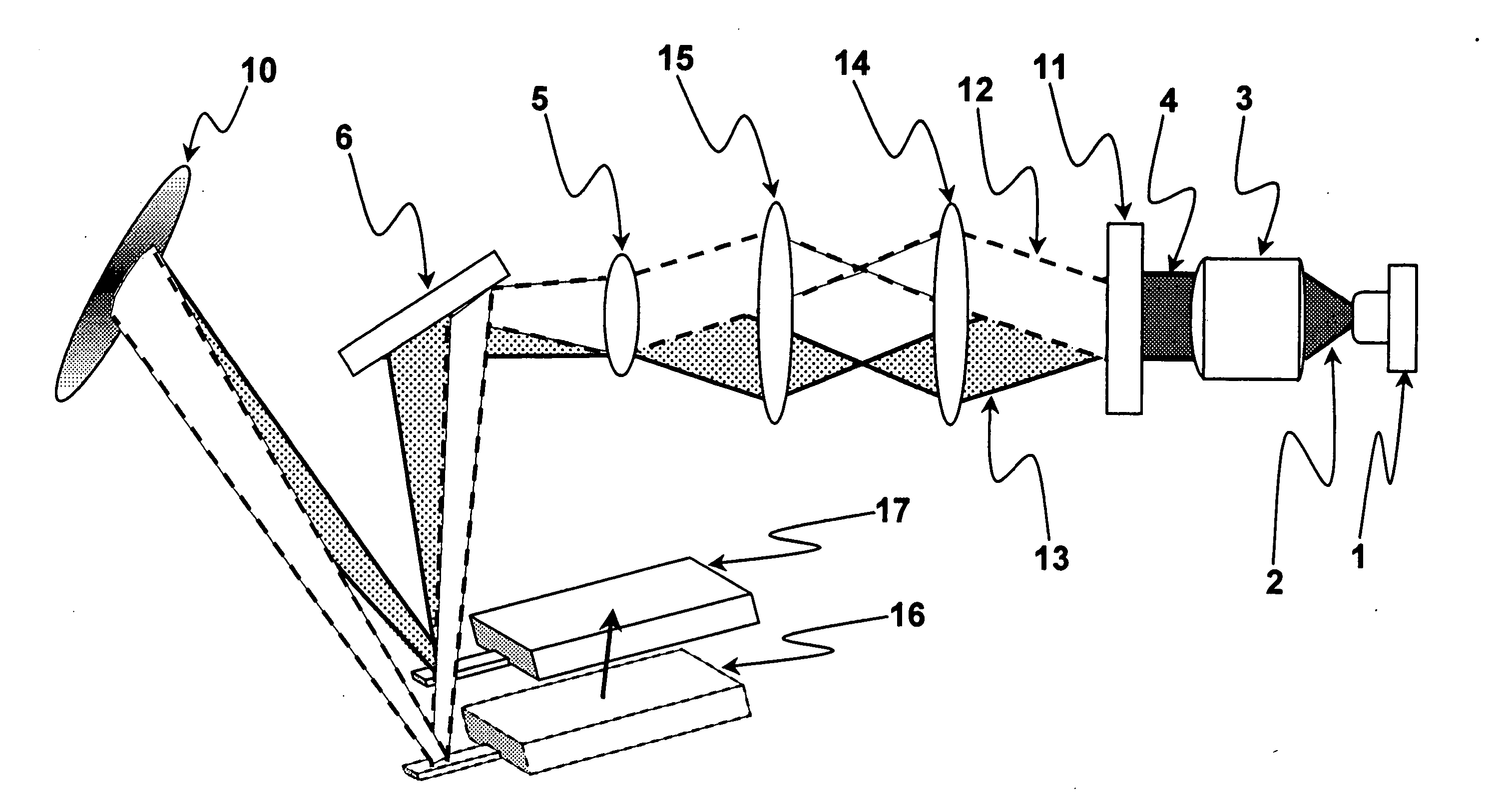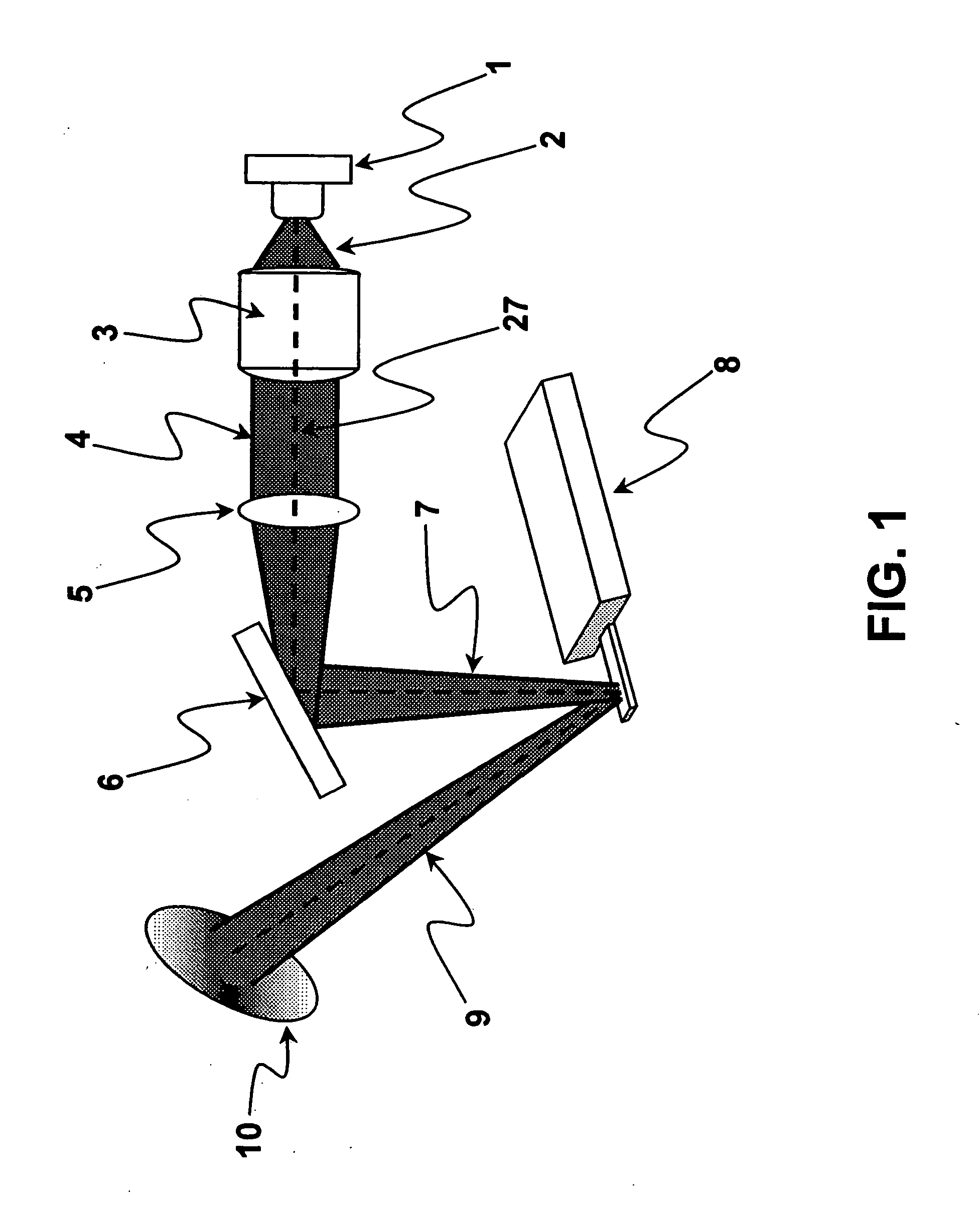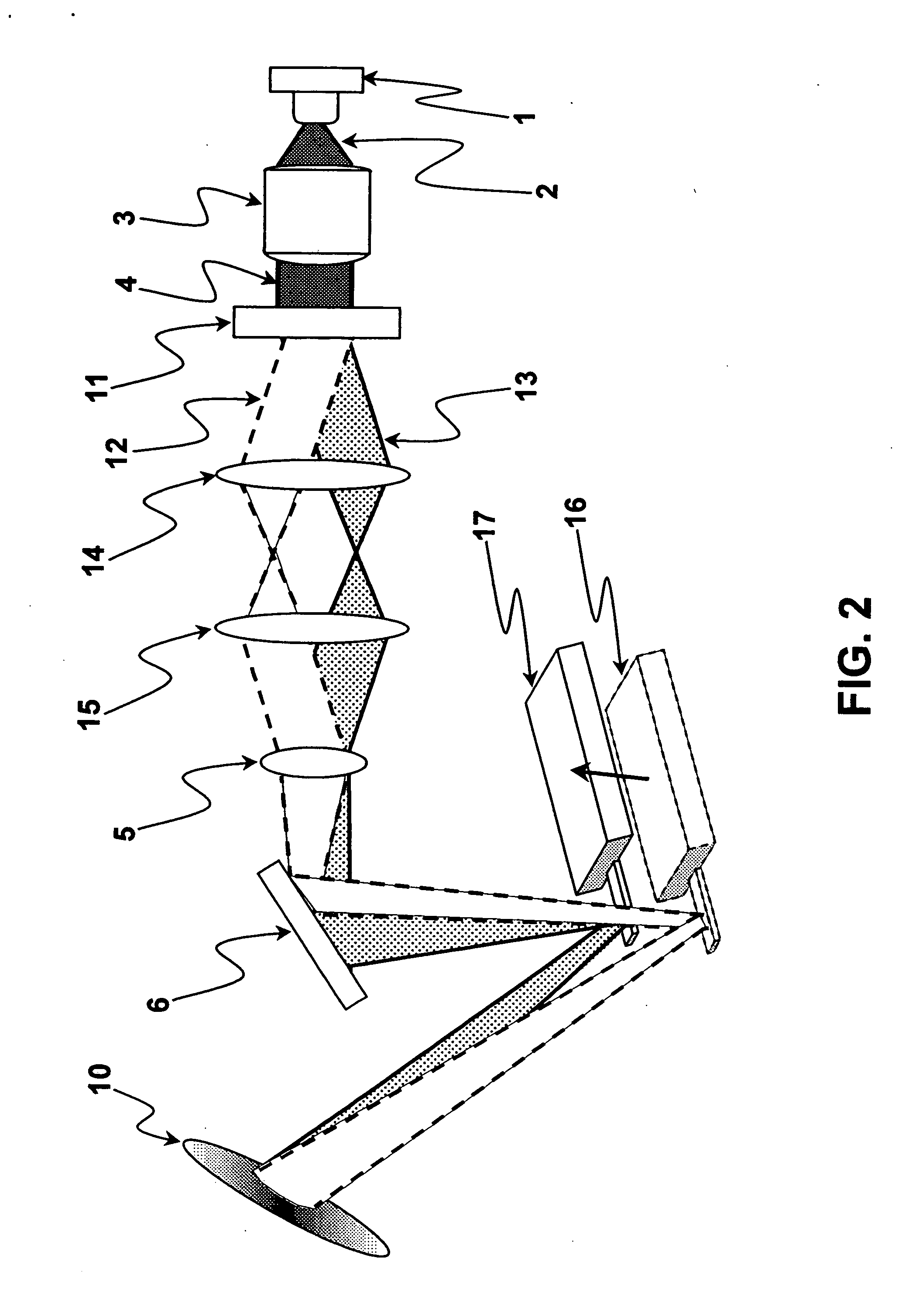Diffractive optical position detector
a detector and optical position technology, applied in the direction of material analysis using wave/particle radiation, instruments, nuclear engineering, etc., can solve the problems of mechanical changes in micromechanical components, limited use of multiple beam sensor arrays in any number of commercial applications, and loss of optical power and spurious interference effects, so as to optimize the sensitivity of optical levers and minimize the effect of lost optical power
- Summary
- Abstract
- Description
- Claims
- Application Information
AI Technical Summary
Benefits of technology
Problems solved by technology
Method used
Image
Examples
Embodiment Construction
[0026]FIG. 2 shows an optical detector for an AFM using a DOE according to the invention disclosed herein. The purpose of this embodiment is to redirect an incident beam onto the cantilever as the cantilever moves, for example, as it scans over a surface relative to the optical assembly, where the cantilever and the optical detector are in different reference frames. Previous schemes devised to solve the problems presented by AFMs which decouple the cantilever and the optical detector have employed conventional optical technology. The most successful, based on a tracking lens that moves with the piezo tube scanning the cantilever, is described in U.S. Pat. No. 6,032,518. A major disadvantage of this and other schemes to deal with these problems is that they require the optical elements to be carried along with the cantilever. This adversely affects the AFM performance by requiring time consuming and imperfect factory adjustments of the optical elements to optimize the tracking perfo...
PUM
 Login to View More
Login to View More Abstract
Description
Claims
Application Information
 Login to View More
Login to View More - R&D
- Intellectual Property
- Life Sciences
- Materials
- Tech Scout
- Unparalleled Data Quality
- Higher Quality Content
- 60% Fewer Hallucinations
Browse by: Latest US Patents, China's latest patents, Technical Efficacy Thesaurus, Application Domain, Technology Topic, Popular Technical Reports.
© 2025 PatSnap. All rights reserved.Legal|Privacy policy|Modern Slavery Act Transparency Statement|Sitemap|About US| Contact US: help@patsnap.com



